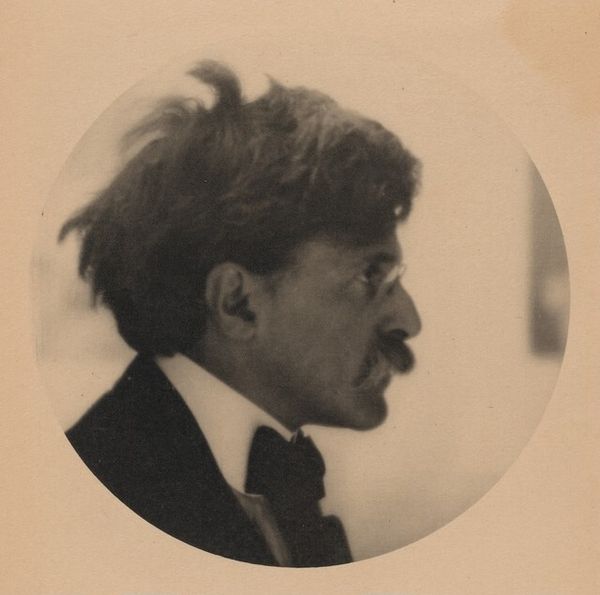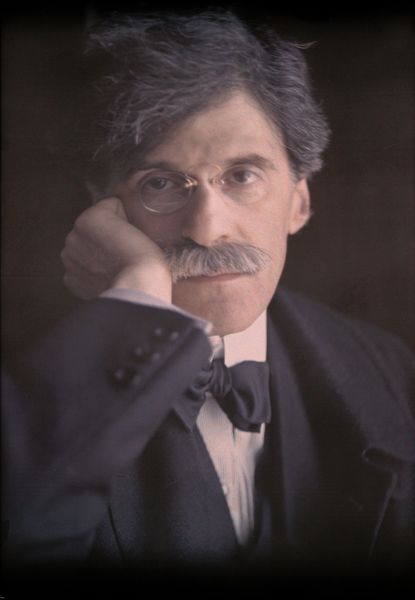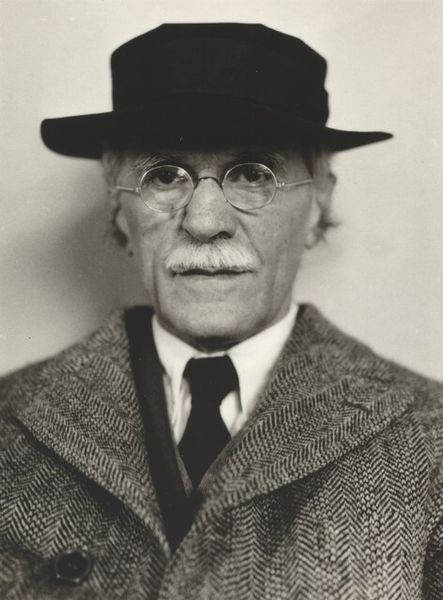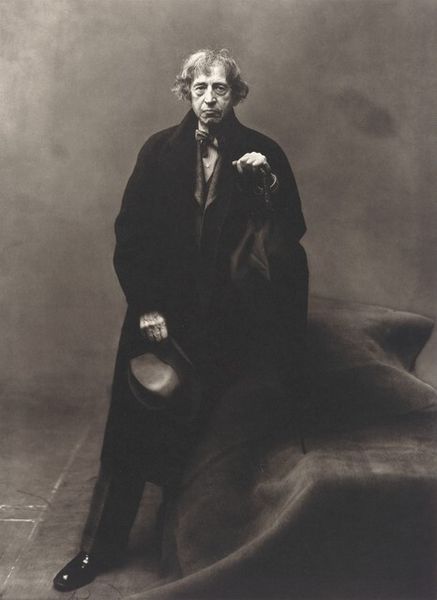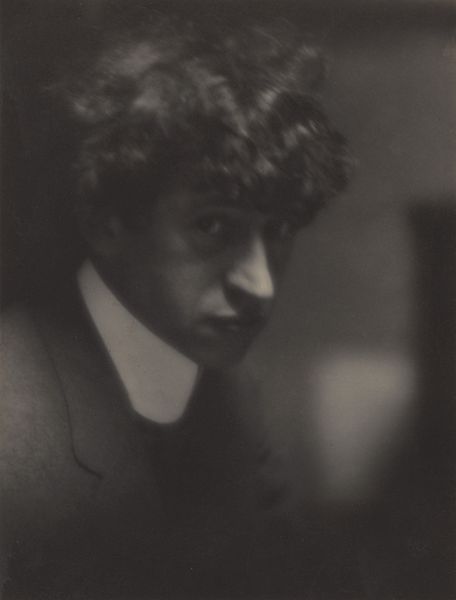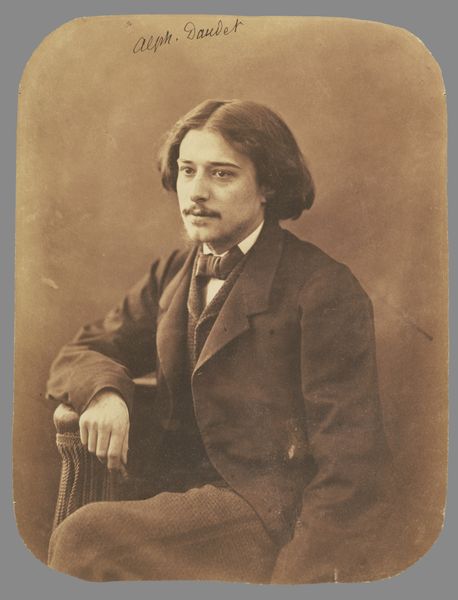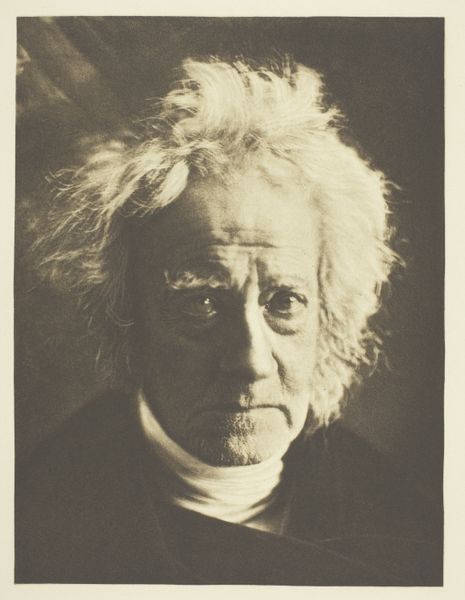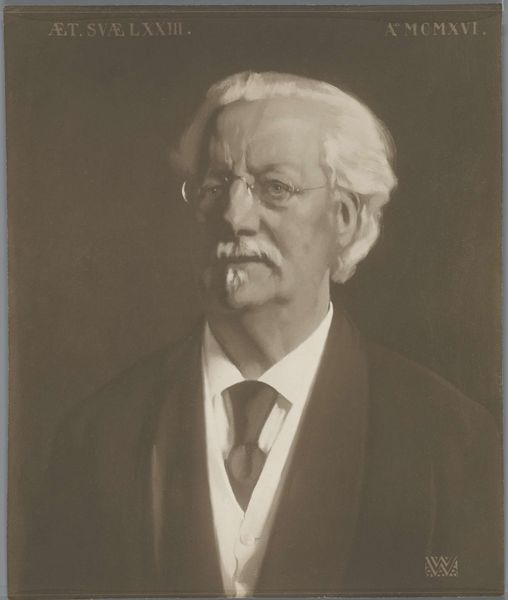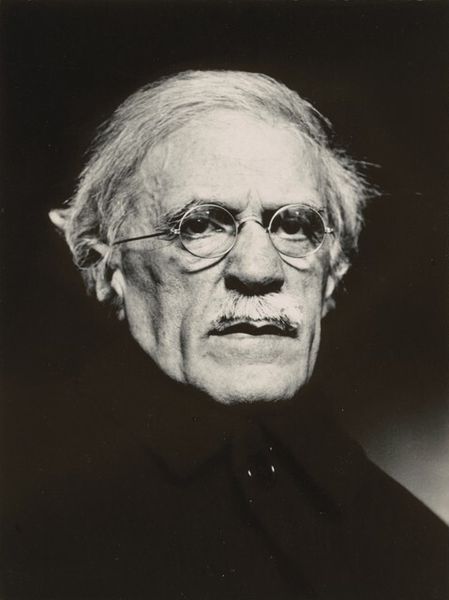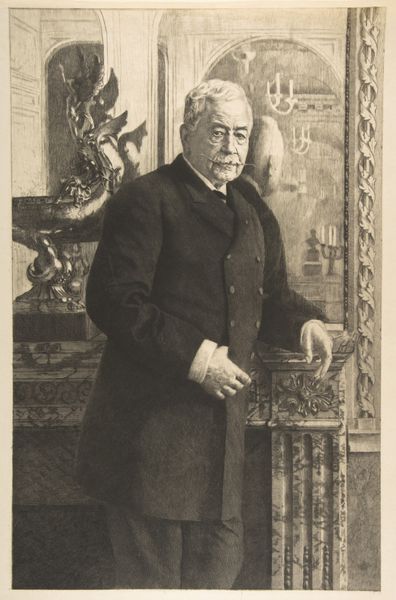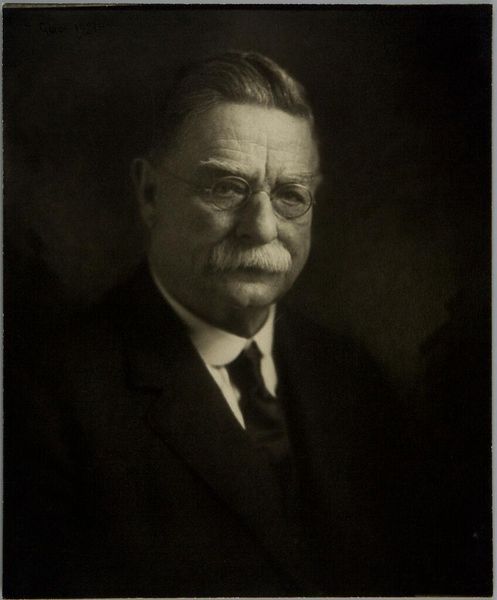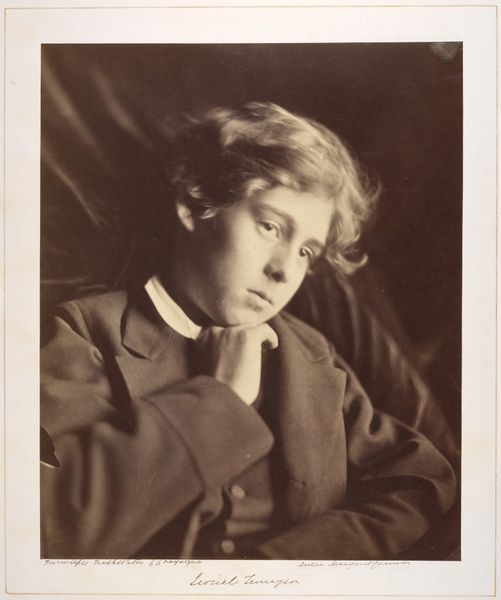
#
wedding photograph
#
black and white photography
#
photo restoration
#
black and white format
#
b w
#
black and white theme
#
black and white
#
single portrait
#
monochrome photography
#
monochrome
Dimensions: image: 24.2 x 19.3 cm (9 1/2 x 7 5/8 in.) sheet: 25.3 x 20.3 cm (9 15/16 x 8 in.)
Copyright: National Gallery of Art: CC0 1.0
Curator: Today we'll examine Alfred Stieglitz's "Self-Portrait," created around 1911. Editor: The first impression is quite striking; the somber mood created by the intense chiaroscuro. It feels as if he is peering out from a dark interior world. Curator: Indeed. Stieglitz's masterful manipulation of light and shadow elevates this photograph beyond a mere likeness. Consider the placement of the highlights; notice how they are directed at his brow and hands. The contrast calls the viewer's attention to his intelligence and craft. Editor: Absolutely, and beyond formal qualities, let's consider the period. Early twentieth century art was very interested in challenging notions of identity, even disrupting conventional modes of self-representation. I am wondering what statements Stieglitz might be making about his roles as both artist and intellectual. Curator: Interesting, considering his influence on modern photography and art as a champion for its acceptance as a fine art form, it's possible that this work might serve to consolidate his standing. He presents himself not merely as an artist, but a figure of intellectual gravitas. The controlled palette lends seriousness to the piece. Editor: Speaking of his position, wasn't Stieglitz pivotal in promoting the work of female photographers like Gertrude Käsebier and later his wife Georgia O’Keeffe? I wonder if this is in dialogue with his relationships with women or even about solidifying the power dynamics in the artworld. Curator: It certainly demands further exploration, wouldn’t you agree? Editor: Indeed. The ability of such a photograph to inspire continued and layered questioning shows how relevant Stieglitz remains. Curator: I’ll echo that. By looking at this, we discover much about its aesthetic construction and can better understand not only Stieglitz’s artistic intentions but ourselves as viewers.
Comments
No comments
Be the first to comment and join the conversation on the ultimate creative platform.
